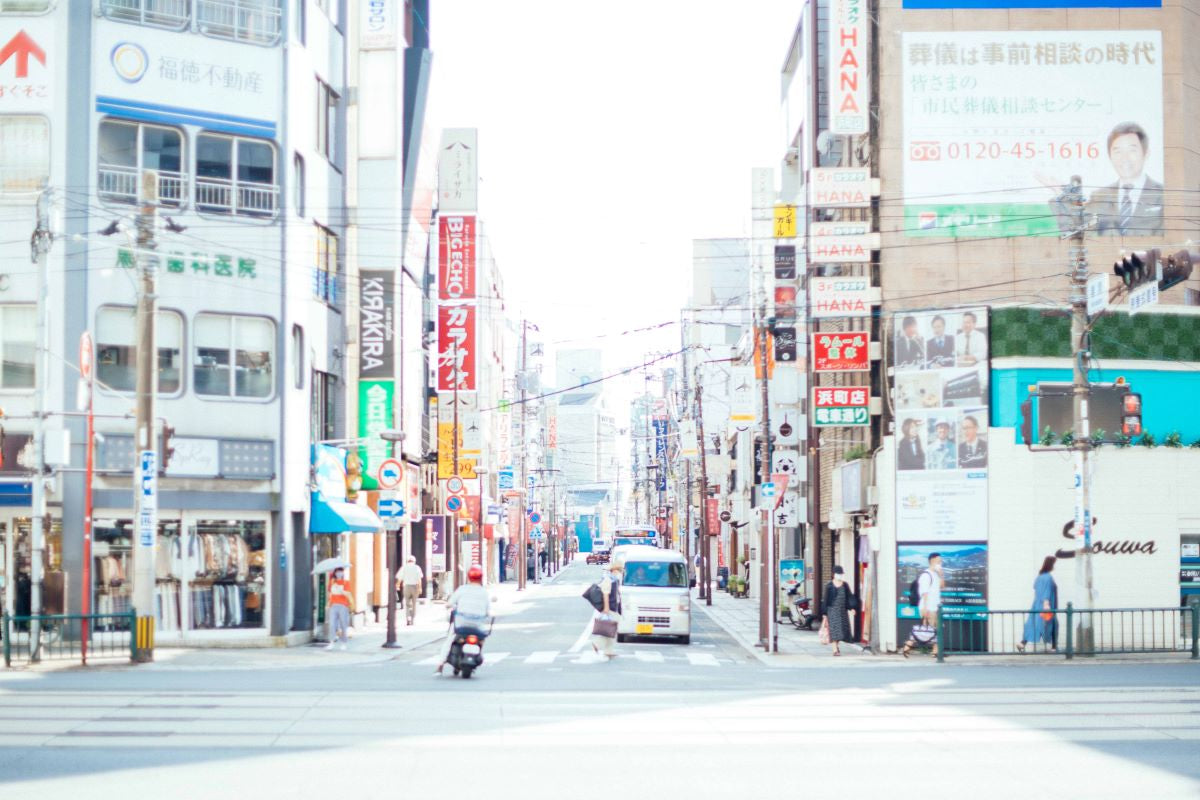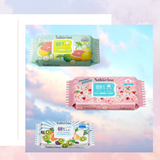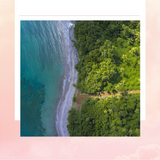4 Important J-Beauty Lessons
Posted on April 02 2021

I don’t mean to be dramatic, but moving to Japan 11 years ago changed my life. I was in high school; and although I knew switching cultural environments at that age would impact my life, I didn’t know my perception of beauty was about to be transformed.
Even though I grew up in France, the so-called ‘land of beauty’, moving to Japan taught me that beauty culture was a culmination of the social and cultural factors influenced by one’s location. Opening myself to the Japanese philosophy of beautytaught me a lot about my skin and what I want to do with it.
Here are the 4 most important beauty lessons that I learned in Japan.
#1 - Sunscreen all year long, baby

One of the first things my host family in Japan had me do was to go to a drugstore to purchase daily sunscreen, a concept I had never heard of before. To me, sunscreen was for beach holidays and scorching summer days. All I knew was that it prevented your skin from burning and tanning too aggressively, not that it was for skin cancer prevention!
I also didn’t know that UVA and UVB rays strike all year long. Clouds do not shield UV rays, I repeat: clouds do not shield UV rays. UV rays are indeed harmful under the scorching sun - especially on the beach or in the mountains, but they even silently attack your skin on cloudy days as well.
If you’re wondering how to incorporate sunscreen into your skincare routine, J-beauty has your back with tons of solutions. From watery textures to BB cream-hybrid products, adding a sunscreen to your daily skincare routine is incredibly simple.
If you’re not into hybrid products and like to keep your skincare steps separate, you can choose a liquid or creamy textured sunscreen and apply it before or after your moisturizer, depending on the thickness of the product. What we love about daily sun protection at Cosme Hunt is that it’s anything but restrictive. It can be incorporated into everyone’s routine.
If you like minimalist routines, you will love the hybrid products that combine sun protection, skincare, and makeup into one product. Most BB Cream contains a Sun Protection Factor (SPF), ranging from 30 to 50 to prevent sun damage. Kosé’s Sekkisei Treatment BB Cream is one of these hybrid superstars: a thin, watery texture that you can either use as a final touch to an already complete skincare routine or as a good multitasker to hydrate, protect, and even skin tone.
Last but not least, remember that sunscreen is more than just anti-aging and sunburn protection. Frequent exposure to UVA rays is one of the major contributors to melanoma which are cancerous skin cells. Using daily sunscreen will not only help you keep your skin luminous and even-toned, it will most importantly keep your skin healthy.
#2 - Beauty comes from within

If you have ever shared a meal with a Japanese person, they might have told you that what you were eating might benefit your skin.
At first, I thought linking food to one’s health was part of Japanese food culture. But learning about how skin works and how it interacts with one’s body, I realized it’s much more than that. This seemingly trivial habit is actually based on solid foundations: your body absorbs nutrients from your food and redistributes it to various organs, including the largest organ: your skin. This is why your diet is so important.
It’s especially relevant for skin because, as previously written for Cosme Hunt, sebum originates from your liver. So, when you ingest too much sugar, carbs or salt, it translates into an imbalance of your sebum secretion which might result in breakouts.
Understanding this in Japan has allowed me to understand how my skin reacts to this or that type of food and I can adjust my diet according to my skin condition easily now. I am also able to predict the impacts that a splurge is going to have and thus prepare for it better with antibacterial targeted treatments or follow up with Japanese food that will help fight acne/breakouts.
#3 - Double cleansing is the only way

Beauty lovers may be familiar with this term, but let’s start from the beginning: J-beauty was a pioneer of the double cleansing method, believing that a clean skin was a double-cleansed skin. In fact, double cleansing is so common in Japan that it’s not even considered as cleansing your skin twice. “We have one step and then the other, and they even have separate names’’, according to a Japanese friend who works in PR for a high end accessory brand.
Double cleansing is really easy to understand and incorporate into your routine. First remove make-up and surface impurities with a balm or oil cleanser. Then use a water-based, gel, or cream cleanser to wash your face and eliminate any remaining impurities.
Learn more about double cleansing and our recommended cleansers.
As some Japanese consumers jumped on the global minimalist beauty trend, I was afraid that double cleansing would fade out. But cleansing is such an important step in Japan that brands found a way around this new consumer trend by launching hybrid products such as the popular DUO Cleansing Balm, which covers 5 functions including Makeup Remover, Face Wash & Exfoliator.
Consumers are also innovating cleansing products by associating specific cleansers to specific occasions or time of day. For instance, looking at the ultimate J-beauty resource @cosme, we can see on recent gentle cleansing launches such as LAGOM’s Gentle Water Cleanser or CUREL’s Moisturizing Foam Face Washthat consumers labelled some of their favorite products ‘’morning-specific cleansers’’ for the gentle formulation that respects skin’s hydrolipidic film.
Japanese brands have a lot to offer when it comes to cleansers: oils, foams, milks, gels, powders, and even pads. J-beauty’s wide variety allows you to create the perfect combination for your skin type and texture preferences. Because our purpose at CosmeHunt is to guide you in the realms of J-beauty, we selected some great cleanser picks for different budgets and skin goals
#4 - Beauty comes from nature

If you had told 15-year-old me that I would preach the efficacy of natural beauty ingredients 15 years from now, I would not have believed you.
I am guilty of doubting natural skincare for years, and I would still doubt it had I not moved to Japan. Spending time there, particularly in rural Japan, taught me that many cultures around the world rely on nature to improve their daily life. More importantly, it made me realize that the words natural and scientific did not have to be mutually exclusive.
The Japanese beauty industry leaves us this testimony in tangible ways including the strong presence of traditional natural ingredients at the forefront of scientific efficacy.
A few examples we can think of are:
- Kombu: the super famous seaweed part of the kombu-cha (kombu-tea, in Japanese), rich in vitamin B2 and probiotics when fermented has strong hydrating properties
- Konnyaku: this root is rich in ceramides, which holds skin’s components together and reinforce its protective barrier. Konnyaku is commonly used in both the food and cosmetic industries.
- Green Tea: ingredient rich in antioxidants has become a staple in skincare brands beyond Japan
- Tsubaki oil or camellia oil: especially used in hair care for its nourishing properties and famously known as a beauty secret among geishas.
- And much more such as tofu, reiki fungus, bamboo, rice, persimmon, etc
Japanese beauty is a gateway to discovering your skin and how simple things from nature and life can help you improve it - and that is what makes it so special.
To find out more, visit our website!
Nawael Khelil
A gamer in her free time, Nawael is obsessed with kitten-heels and real kittens. After doing high school in Japan and graduating university in Paris, she moved to Seoul to work as a fashion and beauty journalist. Now, she's back to Paris where she writes about beauty trends, history, and culture.



